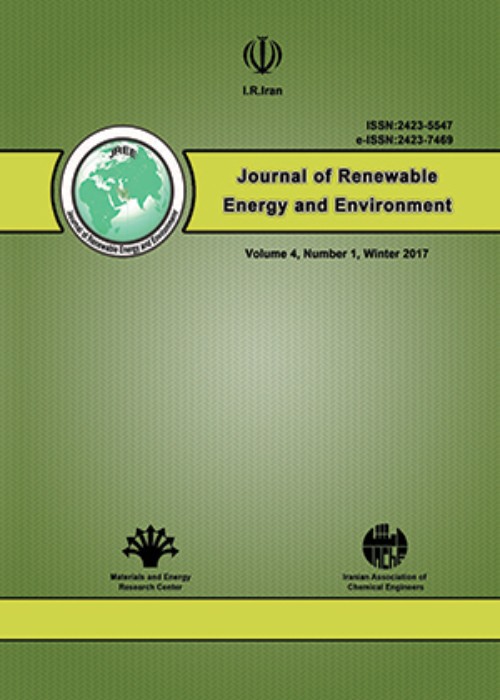Estimation of Solar Radiation Energy in the Paraw Mountain of Kermanshah Province as a Rugged Topography
Author(s):
Article Type:
Research/Original Article (دارای رتبه معتبر)
Abstract:
One of the most important characteristics of site selection for solar energy system installations and optimum solar energy harvesting in the hilly or mountainous terrains is knowledge about the amount and duration of solar radiation within such topographic terrains. Solar radiation data are not readily available for most mountain terrains because of their rugged topography. For these areas, solar radiation data can be obtained through alternative methods such as the Hemispherical Viewshed Algorithm in which spatial and temporal variations of radiation are calculated in terms of elevation, slope, and terrain. In this study, this algorithm was used to estimate and model solar radiation in the Paraw Mountain in Kermanshah. The inputs for this method were ASTER Digital Elevation Model (DEM) with a spatial resolution of 30 m and meteorological parameters that affect solar radiation. The slope and aspect maps were created from ASTER DEM and layers for monthly direct, diffuse, global, and radiation periods were generated for the year 2016. The results showed that in the Paraw Mountain, the amount of solar radiation received was dependent on the slope orientation, as the north and northeast-facing slopes received the lowest and the south and southwest-facing slopes and the flat areas received the highest direct and global radiation (i.e., in terms of this factor, these landscapes can be recommended as the best site for solar energy system installations and optimum solar energy harvesting). The sum annual radiation period varies from 382.67 to 4310.9 hours, the total radiation received annually varies between 1005.56 and 7467.3 MJ/m2, and the sum monthly solar radiation is the highest in July (181.49-842.26 MJ/m2) and lowest in December (25.42-319.90 MJ/m2). Statistical error comparisons between station-based measurements and model-based estimates were performed via R2, measures. As a result, this model was recommended for solar radiation estimation with acceptable accuracy, especially in high areas with rugged topography where solar radiation data are not readily available.
Keywords:
Language:
English
Published:
Journal of Renewable Energy and Environment, Volume:8 Issue: 2, Spring 2021
Pages:
1 to 12
magiran.com/p2267987
دانلود و مطالعه متن این مقاله با یکی از روشهای زیر امکان پذیر است:
اشتراک شخصی
با عضویت و پرداخت آنلاین حق اشتراک یکساله به مبلغ 1,390,000ريال میتوانید 70 عنوان مطلب دانلود کنید!
اشتراک سازمانی
به کتابخانه دانشگاه یا محل کار خود پیشنهاد کنید تا اشتراک سازمانی این پایگاه را برای دسترسی نامحدود همه کاربران به متن مطالب تهیه نمایند!
توجه!
- حق عضویت دریافتی صرف حمایت از نشریات عضو و نگهداری، تکمیل و توسعه مگیران میشود.
- پرداخت حق اشتراک و دانلود مقالات اجازه بازنشر آن در سایر رسانههای چاپی و دیجیتال را به کاربر نمیدهد.
In order to view content subscription is required
Personal subscription
Subscribe magiran.com for 70 € euros via PayPal and download 70 articles during a year.
Organization subscription
Please contact us to subscribe your university or library for unlimited access!


